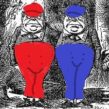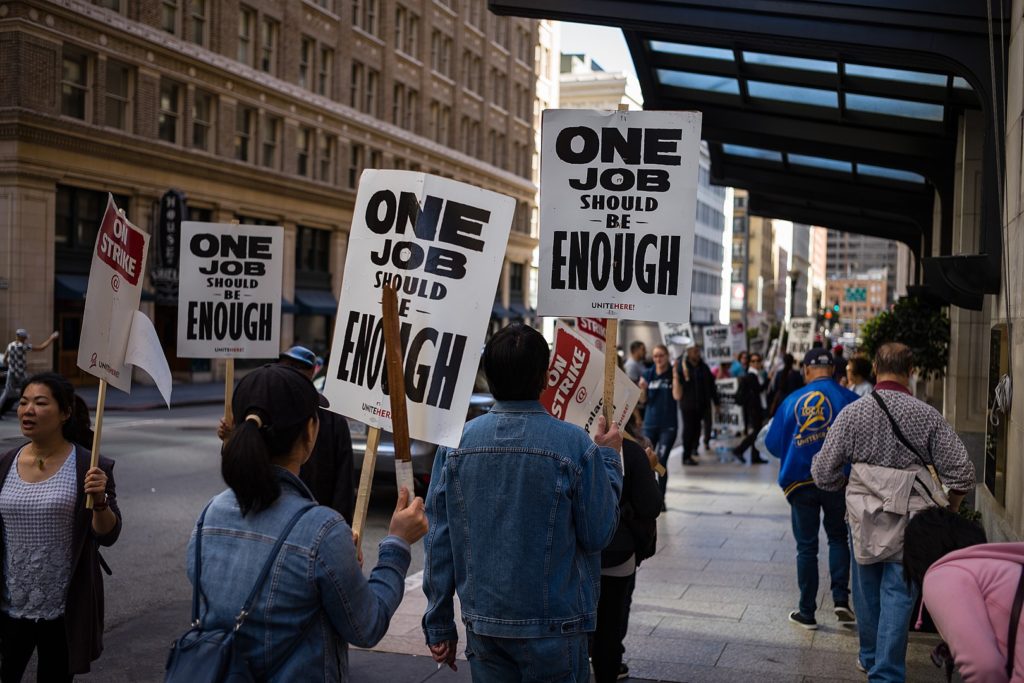by Karlos Bermann
The United States claims to promote democracy all around the world, but is there real democracy at home?
Capitalism in the US rules by the deception that its subjects freely choose their government and its policies. From the proverbial cradle to the grave, we in the United States are told that we live in a Democracy, the Greatest Democracy that has ever been!
During and since the 2020 presidential election cycle discussion of democracy and the perceived threats to it have been much in vogue among media commentators and pundits. During the 2020 campaign, for example, CNN ran the headline, “Why Bob Woodward says American democracy is ‘teetering.’” A chorus of Liberal commentators chimed in on the same theme. The attempt by Trump and his disciples to overturn the election brought the Liberal handwringing over the fate of “American democracy” to a fever pitch. But how can you lose something you never had? The “Greatest Democracy Ever”? Let’s fact check that.
Exploding the myth of American democracy
Democracy does not equal elections, elections do not equal democracy
The proof they offer that we live in a Democracy is that we have elections. Most citizens, having dined on this pabulum since kindergarten, would probably agree with that. But if democracy equals elections, why do they so often qualify the word “election” with the adjective “democratic” (“the elections were democratic,” “Joe Biden was democratically elected,” etc., etc)? Yes, we do have elections. But having elections doesn’t mean we have democracy. Not at all. But more on that later.
What does “democracy” really mean anyway?
The word democracy comes from ancient Greek, as you may have learned in school, although your teacher probably didn’t point out that Greek “democracy” was limited to Athens, one of many independent city-states that comprised ancient Greece, or that it was really just “democracy” for the ruling class—the free, male citizens (a small minority of the population), and therefore wasn’t really democracy at all. They probably taught you also that democracy means government by the people. Well, that’s not precisely true. The second root of the word, cracy, does mean power or rule. But the first part, demo, from demos, doesn’t mean people in general, as in “all the people.” It means the common people, the masses—as distinct from the aristocracy, the plutocracy, the wealthy elite. In ancient Greece demos meant the same as plebs did in ancient Rome, the word from which we get “plebeian.” To the patricians of Greece and Rome, as to the monarchical ruling classes that came after them, the word “democracy” meant rule by the unwashed, by the mob. The idea of democracy—and that’s all it was, an idea—was abhorrent to them.
So from the very beginning the word democracy has meant, or at least implied, class struggle.[1] The struggle of the demos—the masses—against the patricians—the ruling elites—the aristocrats who owned most of the land and who, when push came to shove, owned the inhabitants of the land as well, be they slave or serf or nominally free. And of course the head aristocrat was the monarch, be he (or occasionally she) – king, queen, emperor or some other title, whether hereditary, or chosen by combat, or by long knives in the night, or by some other means.
“Democracy” becomes fashionable (in polite conversation)
During the Age of Enlightenment, as burgeoning capitalism weakened the bonds of European feudal society, egalitarian and populist rhetoric became fashionable among layers of the educated and privileged classes. These were people who would provide the intellectual trappings for the new economic force straining against the straightjacket of feudalism with its hereditary landed titles and absolute monarchy. They were the intellectual and philosophical spokespersons for the emerging bourgeoisie. Bourgeoisie, from the French, literally means “town dwellers.” Initially they were the commercial classes of the towns and cities.
The ideas and rhetoric of the intellectuals corresponded to the growing aspirations of the bourgeoisie. Notwithstanding the rhetorical flights of the thinkers and intellectuals, the last thing the capitalists wanted was to see power in the hands of the demos, the plebs. They wanted influence and power for themselves. For them the rhetoric of democracy was simply a means to gather the common people of the towns behind them—the mechanics, artisans, and laborers who had broken the bonds of serfdom. It was they who would provide the foot soldiers, the cannon-fodder, for the bourgeoisie’s class war against monarchy and feudalism.
Exploding the myth of American democracy
The American Revolution
As in Europe, the elites of England’s thirteen North American colonies were becoming restless. The British monarchy and the ruling class it represented extracted as much as they could from these colonies, and to that end tightly controlled economic activity. But during the more than 150 year history of the North American colonies a native aristocracy had grown up, based on huge landed estates much like those in England itself. Unlike their English counterparts, however, the home-grown aristocrats had no official titles, no seats in the House of Lords, and therefore no power. Most importantly, they lacked the freedom to further enrich themselves however they liked. They didn’t want to be part of someone else’s empire; they wanted an empire of their own. In the words of historian John Peterson,
You had a young, fresh bourgeoisie sitting on enormous economic potential just waiting to be unleashed. But in order to unleash that potential—for the benefit and enrichment of the American capitalists and not the British—they required the more efficient and stable confines of their own nation state. For their part, the British—still headed by a monarch despite having already had their own bourgeois revolution—wanted to maintain the traditions, stability, and profitability of their robust and growing empire. They ensured this by exerting strict control over their colonial satellites when it came to access to markets, credit, manufacturing, ship building, trade, etc.[2]
While the British colonial system retained vestiges of feudalism, the plantation owners of North America and the merchants they dealt with were mercantile capitalists. They produced commodities for the market and engaged in trade. They wanted a free market for their products, not a restricted neo-feudal colonial system where trade was controlled and heavily taxed by the British Crown.
Enter the demos, “the mob” (the working people)
The aristocratic North American capitalists were conservative and cautious. At first they sought only reforms—a reduction in taxes, the loosening of the restrictions on trade, and perhaps representation in Parliament—not independence from Britain. When England continually rebuffed or ignored them, however, their speeches and writings increasingly invoked the egalitarian ideas of the Enlightenment. Their populist rhetoric was largely aimed at rousing the common people–the small farmers, the urban laborers, craftsmen, and mechanics. For those powdered-wig, silk-stockinged capitalists-in-diapers to achieve even their limited goals they had to mobilize the demos against British rule.
Best remembered among the popularizers, ironically, is the dilettante planter Thomas Jefferson, who, notwithstanding his ownership and exploitation of some 600 slaves, became the master of high-sounding egalitarian and democratic verbiage (and in so doing became the unmatched master of “democratic” hypocrisy). The masses responded to this rhetoric, as well as to the agitation by radicals like Samuel Adams and Thomas Paine—responded to such an extent that they quickly pushed the movement beyond the limited goals the home-grown aristocrats had in mind. The North American elite had to get out in front of the movement lest they lose control of it.
And to do that they used a lot of rhetoric, but steered clear of the word democracy itself, lest it overly excite the mob and make it even harder to control. Indeed, according to historian Arthur M. Schlesinger, Sr., many merchants tilted back toward the British “when it became apparent that their agitation for commercial redress was unloosing social forces more destructive to business interests than the misguided acts of Parliament.”[3] Colonial aristocrat and “Founding Father” Gouverneur Morris, who would later become a key figure in drafting the U.S Constitution, penning the preamble of that document, wrote to Thomas Penn of his disdain as well as his fear of the aroused demos. In a letter to Penn written in May of 1774, Morris worried that “The mob begin to think and reason.” He called them, the working people, “Poor reptiles” who “bask in the sunshine [of the attention from the populist agitation?], and ere noon they will bite, depend upon it . . . I see it with fear and trembling, that if the disputes with Britain continue, we shall be under the worst of all possible dominions. We shall be under the domination of a riotous mob.”[4]
The disputes did continue, of course, with the outbreak of armed hostilities in April of 1775, when the armed demos confronted British troops at Lexington and Concord, troops on their way to arrest Samuel Adams, who thus managed to escape. Although the rupture feared by Gouverneur Morris one year earlier could not be avoided, Morris’s letter to Penn foretold the manner in which the “mob” would eventually be harnessed to the wheels of capitalism.
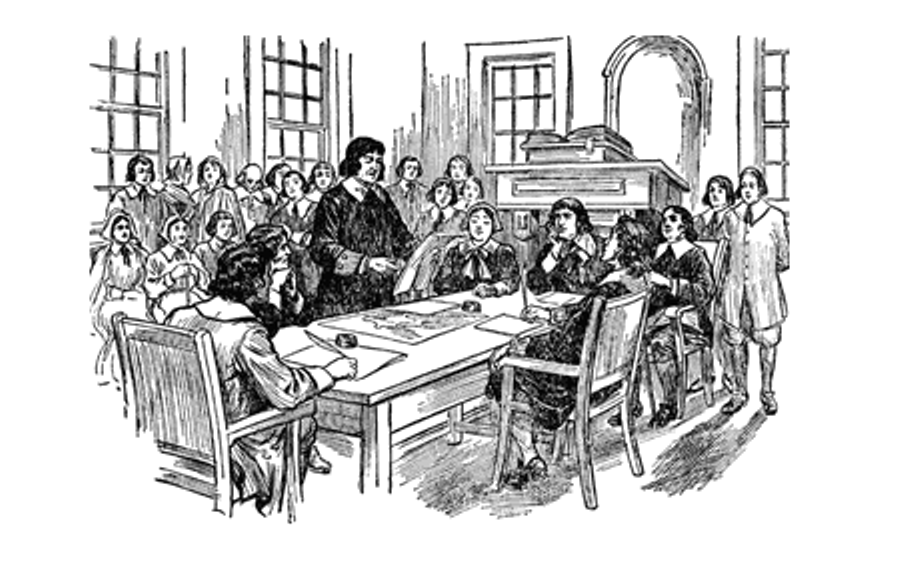
In Morris’s cynical letter, the common people (the “tradesmen &c”) are “sheep” who can be “finessed,” or manipulated, by the aristocrats (the “shepherds”). This can be achieved through “legerdemain” (trickery) and empty “watch words” (slogans) such as “liberty and [freedom of] religion.” While Morris approves these methods of conning the people in order to safeguard the interests of the wealthy, he fears that the “shepherds” have not been sufficiently skillful in their use, because he finds to his chagrin that “the mob” are openly debating whether the future government “should be founded upon Aristocratic or Democratic principles.” “It is needless to premise,” Morris says, in beginning this letter, “that the lower orders of mankind are more easily led by specious appearances, than those of a more exalted station.” And farther on, “The remains of [the spirit of the English Constitution] . . . will give the wealthy people a superiority . . . but would they secure it, they must banish all schoolmasters, and confine all knowledge to themselves.” In other words, while the common people are easily duped, for the “wealthy people” to remain in control they must keep the masses in ignorance. And that is exactly what the system they established set out to do.
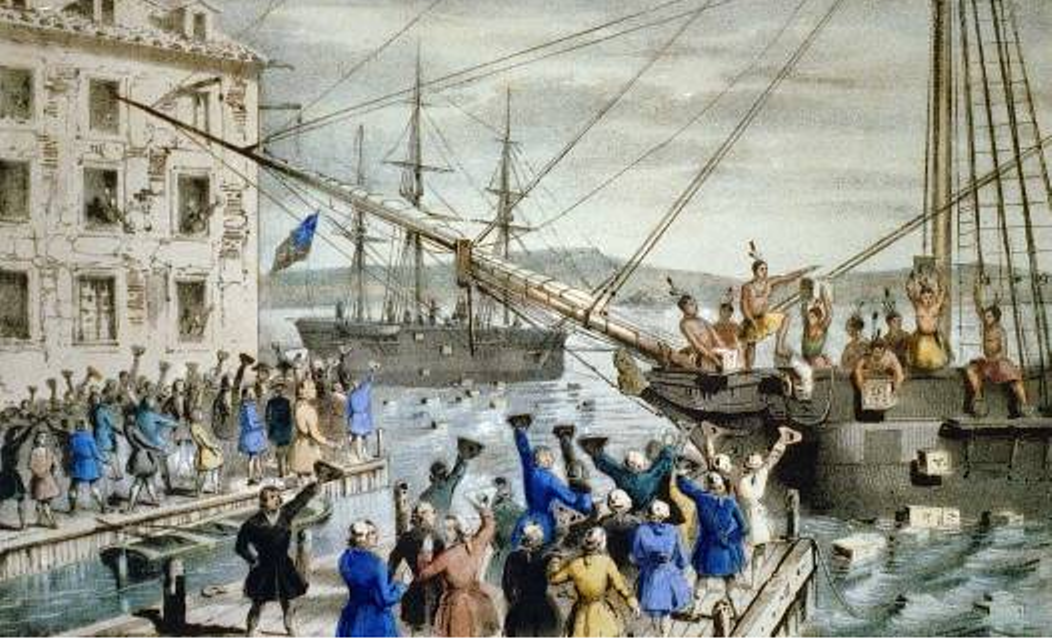
Nothing written here should be construed to suggest that there was not a strong democratic impulse behind the American Revolution. Henry Alonzo Myers wrote that
Chief among these [disadvantages of colonial status] to a multitude of ordinary Americans was the way in which the mother country fortified the social prestige of the wealthy and powerful, threatening to establish in the new world the fixed and unalterable hierarchies which had driven many of the colonists out of the old.[5]
That democratic impulse came from below, not from the colonial aristocrats like Thomas Jefferson and the other “Founding Fathers,” for all their high-flown rhetoric. The American Revolution was stolen from that “multitude of ordinary Americans,” stolen from the demos.
The “Founding Fathers” did not establish a democracy
“We the people . . .” So goes the myth. Who were “the people” referred to when this great “democracy” was established? They were Caucasian (primarily Anglo-Saxon); they were male. Only males who were large landowners of British or other North European extraction could vote or hold office.[6] But even with the electorate winnowed down to this tiny group, the “Founders” still feared elections. So they built in safeguards. Safeguards against democracy. Even they couldn’t vote for senators, who were appointed by the state governments, or for the president, who was chosen by a small handful of electors, who in turn were chosen by the state legislatures controlled by the landed gentry. The boisterous town meetings held throughout New England during the decade preceding the Declaration of Independence were much closer to real democracy than the system set up in the former Thirteen Colonies at the close of the Revolutionary War. The home-grown North American elite no more favored real democracy—the rule of the demos—than did King George. What they established was a republic—a political system that simply did away with the traditional hereditary monarchy (itself a novelty at that time). The republic they created was a plutocracy, not a democracy.
Exploding the myth of American democracy
No! No “democracy” in the Constitution?
In passing, it is worth noting that the word democracy doesn’t appear anywhere in the Declaration of Independence. It does not appear a single time in the Constitution. Nor does it show up in the amendments to the Constitution or the Bill of Rights that came later. Seventy years afterward it could not even be found in Lincoln’s Gettysburg Address.
It’s true that over the years there were reforms. Senators are now elected rather than appointed. A wider spectrum of European-American males was allowed to vote, and eventually women were as well. After the Civil War African-Americans were formally given the right to vote, although in practice that right was soon taken away with the deconstruction of Reconstruction, and efforts to restrict voting by African-Americans and other people of color continue under various guises today. These reforms were concessions to popular pressure on the one hand; but on the other they also reflected the increasing self-confidence of the ruling class in its ability to maintain control. In other words, just a modification of the “finessing,” the legerdemain, or sleight-of-hand, discussed by Gouverneur Morris.
“Majority rule” and “representative democracy”— myth and reality
They probably taught you in school that democracy means “majority rule.” They likely told you also that the majority rules through “representatives,” that what we have is “representative democracy.” The voters elect representatives to rule for them, because, they say, that’s the only practical way to do it. After all, thousands or millions of people can’t vote on every bill, every law, every issue or policy.
So, in the United States we have elections and we have representatives. At least we have people called representatives. But who are these people and who or what do they actually represent? The “representatives” certainly claim that they represent the people, the voters—of their town, city, county, congressional district, state, whatever. But what does it mean to represent someone, some body of people? If it means anything at all, it means to understand the ideas, wishes, needs, and wants of those represented, and then to carry them to the seat of government and cast votes accordingly—the way the represented electorate would vote if they could do it themselves. The representative is the spokesperson for those who have elected her or him, nothing more, nothing less.
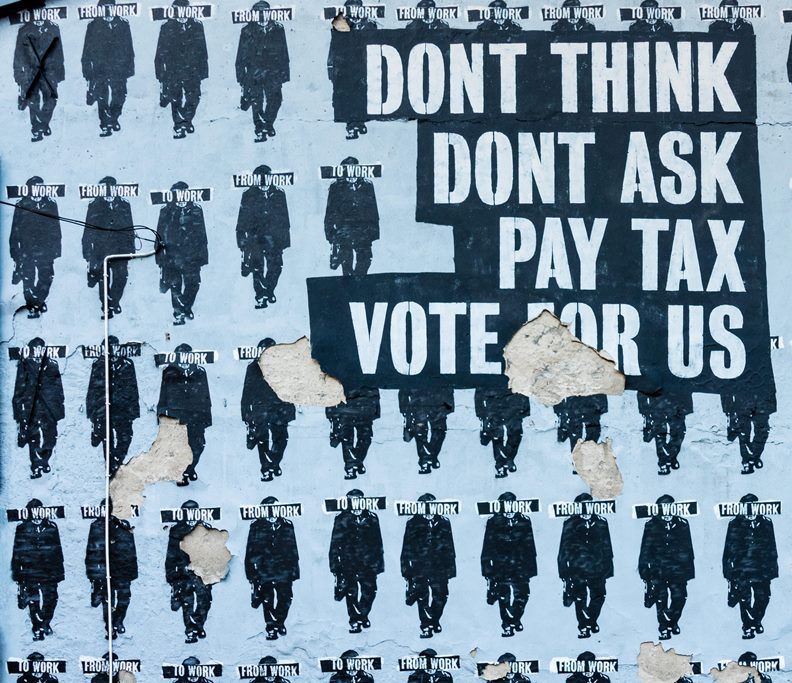
But of course that is very far from what actually happens in the United States. Here the “representative” represents a piece of territory (supposedly)—often gerrymandered to skew it toward one political party or the other—often to restrict the influence of racial minorities, as with congressional districts. These “representatives,” then, nominally speak for that geographical entity. Do all the people—or even a majority of the people—in these zones think alike? Do they all have the same needs and interests? No, of course not. In fact, their real interests often conflict. So how then can one individual represent both worker and employer, landlord and tenant, criminal and victim? The answer is, they can’t and they don’t. During the election campaigns they posture, they make vague promises to disparate groups with conflicting interests, they spend a lot of money on advertising agencies and “spin doctors” to create an image. Once they’re elected the only thought they give to the majority of voters is how to con them again at the next election cycle. When in office, who they really represent is not the demos, the majority. This is one fundamental piece of the Great Democracy Scam: this type of “representation” isn’t meant to implement the will of the people, it’s meant to blunt or short-circuit the will of the people.
Exploding the myth of American democracy
So who do the “representatives” really represent?
We live under a capitalist system. The economy, which is the foundation of all human life and society in the broadest sense of that word, is a capitalist economy. That means that the people who own and control the economy produce virtually everything that is required for human life (and much that isn’t). Those people, with few exceptions, are motivated by the quest for profit, not by the desire to provide a service to society. That they wield tremendous influence, which translates into power and control, is a no-brainer. How many of them are there? One percent? Less? I don’t know, but they sure as hell aren’t the majority or anything remotely close to it. The vast majority of us aren’t capitalists, not even those of us who own a few shares of stock, or a little boutique, or those who think capitalism is the best of all possible worlds, or even that capitalism is what God wants. If you had an election where one candidate got up and said, “I’m the candidate of the capitalists and if I’m elected I’m going to make sure the capitalists get exactly what they want,” while another candidate gets up and says, “I represent the workers, the wage and salary earners, and all who have the same interests,” who do you think would win? The capitalists wouldn’t have a snowball’s chance in hell. That would be real democracy, real majority rule. But what we really have isn’t democracy and it isn’t majority rule. It’s rule by those who dupe the majority into thinking they have democracy, dupe them into thinking that their vote really counts.
How the scam works
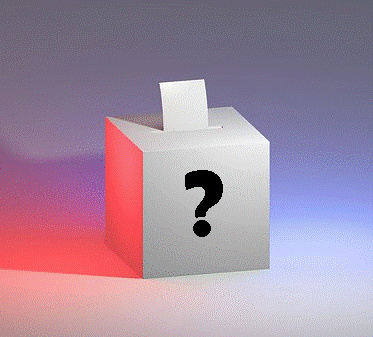
Capitalism in the US rules by the deception that its subjects freely choose their government
How do they get away with this scam? First of all, the candidates, the would-be representatives, don’t even run on a program or “platform” that binds them in any way or makes them answerable to the electorate they supposedly represent, except at the next election where the voters will again have to choose between the lesser evil of two candidates. At that time the candidates will once more run on vague promises and images created for them by advertising agencies and “spin doctors.” And, of course, by attacking their opponents for all sorts of trivialities, for personal quirks and peccadilloes. These political campaigns to dupe the people are so expensive they require millions and even billions of dollars for election to any office beyond the strictly local. Many, if not most, of the candidates are wealthy in their own right. In any event, it is capitalists—millionaires and billionaires—or the political action committees (PACs and “Super PACs”) that represent them, who finance the politicians. Under the current system there is no chance of them being elected without that financial support. Then they publicize their campaigns through the mass media, and now also through “social” media—virtually all of it corporate owned and controlled, and thus an integral part of the whole system. Under such a system the reality is that no candidate for major office can hope to amass the resources needed to wage a successful campaign without having proven that he or she is “trustworthy”—a dependable supporter of capitalism, of the status quo. Representative democracy? There is nothing representative or democratic about this system.
Rigged elections?
Meanwhile, the mass media continually hammer away at the idea that there are only two viable alternatives—the Republicans and the Democrats. No one else is “electable,” and to vote for an outsider (an independent or “minor” party candidate) is simply to waste your vote. For that matter, the electoral laws in most states make it impossible for third party candidates even to get on the ballot. And where they do, the twin capitalist parties are ready with the money and the legal clout to get them off the ballot if necessary. That’s just what the Democrats did to the Green Party in Pennsylvania and Wisconsin in 2020 to insure that it wouldn’t take votes away from Biden.[7]
Speaking of Biden, he offers an excellent example of how, even within the narrow and limited confines of the institutionalized two-party system, the elections are rigged against real voter choice. During the primaries, the first half of the electoral cycle, Biden trailed far behind several other candidates. The media had all but pronounced him dead. Bernie Sanders, the darling of the so-called “progressive” wing of the Democratic Party, was way ahead and looked to be on track to confound the pundits and take the presidential nomination. But as the candidates neared the finish line, presto!—powerful figures within the Democratic Party started coming out and endorsing Biden. Soon the other “also ran” candidates did the same. The corpse of Biden sprang up and began to dance!
Sanders was an outsider. He began his political career as a self-styled independent and “socialist.” That’s how he ran for and won a seat in Congress from Vermont –first as a congressman and then as a senator. But Sanders is not a socialist. He is someone who’d like to reform capitalism. He is a “social democrat.” Since he went to Washington, he has functioned as a member of the Democratic Party caucus. To the very undemocratic power-brokers and controllers of the Democratic Party, he was too much an unknown and/or unreliable figure, someone not sufficiently housebroken. They launched a campaign, behind the scenes at first, saying that Sanders was unelectable. The media got in the act as well. Whereas they had nearly written Biden off as a has-been, now they published glowing reports about the new, revitalized Biden. The party hierarchy twisted arms and told anyone with influence that if they didn’t get on the Biden bandwagon there’d be no future for them in the party—or in politics. Influential people who had not previously committed themselves started endorsing Biden.
Joe Biden is a long-time Democratic Party insider, a machine politician and Cold War veteran with a record spanning 40 years proving he’s a loyal supporter of the system, including its imperialist foreign policy and all the wars overt and covert waged in pursuit of that policy, from Vietnam to Iraq and Afghanistan. How could other politicians resist when even the “progressive” Sanders himself capitulated to the pressure from the party hierarchy? So much for change through the Democratic Party. It was back to lesser-evilism. Vote for the one you think is the least bad and if he/she doesn’t work out, you vote for the other one next time. Free and Fair Elections! Democracy, US style!
Then, when the politicians get into office, who do they appoint to the important non-elective positions? Here is a quote from Neil Sheehan’s book on the Vietnam War, A Bright Shining Lie, which he reported on as the United Press International’s Saigon bureau chief during the early years of the war and later for the New York Times. In reference to Daniel Ellsberg’s path into government (before he became disillusioned and leaked the damning Pentagon Papers), Sheehan wrote:
The Harvard that Ellsberg entered was a place where ambitious intellectuals were beginning to see scholarship as a road to high office in the new American state. World War II had given intellectuals a turn in the action-oriented atmosphere of government, and many liked it. The Cold War perpetuated a cause and a crisis and encouraged the rationale that intellectuals could provide an expertise lacking among the corporation lawyers, investment bankers, and businessmen who had traditionally monopolized the senior appointive posts.[8]
Sheehan wasn’t writing as a Marxist, or even as a radical. He was simply a reporter for a major newspaper. Initially, he himself had supported the war, and he freely admitted that his personal bias had warped his reporting. But, like Ellsberg, he became disillusioned with it. He simply mentions the “corporation lawyers, investment bankers, and businessmen who . . . monopolized the senior appointive posts” in passing, as a fact, which it certainly was, and still is. Do those lawyers, bankers, and businessmen in government represent the majority of the electorate? Hardly.
Since we are on the subject of the Pentagon Papers, nothing, I think, in recent history, better proves the thesis that the United States is not a democracy than those documents. In a piece published in May of 2021, commemorating the 50th anniversary of those documents seeing the light of day, Paul Ryder wrote, “The Papers provoked questions about how the war could have been waged through six presidencies in a row: Harry Truman, Dwight Eisenhower, John Kennedy, Lyndon Johnson, Richard Nixon, and Gerald Ford. How could such dissimilar presidents have gone wrong — over and over again?” Six presidents, all put in office (or at least given “legitimacy”) by the votes of the American people: three Democrats, three Republicans—all pursuing the same policy while lying to those who put them office about what they were doing and why they were doing it. Ryder goes on: “Six presidents in a row did not change the long-term goals and strategy, and could not have if they wanted to, because presidents don’t decide those things.” Who does? Again, Paul Ryder:
The long-term foreign policy goals and strategy are set by a complex foreign policy establishment. It includes the Pentagon, weapons manufacturers, CIA, NSA and fifteen other intelligence agencies, multinational tech firms, banks and other corporations, selected members of Congress, both political parties, elite universities, think tanks, and big media.[9]
Does all this sound like democracy, like the people not only have a choice, but the final say?
Exploding the myth of American democracy
“Checks and balances” and the three branches of government
They teach us in school that the three branches of our government—the Executive, the Legislative, and the Judicial—constitute a system of “checks and balances.” This, they tell us, is intended to prevent any one of them from getting too much power and thereby threatening our “democracy.” In fact, these are simply more safeguards against democracy. Any legislation Congress passes that is not vetoed by the President and is signed into law can be ruled unconstitutional by the Supreme Court, which is, of course, appointed, not elected. The bicameral legislature—Senate and House of Representatives—is another check in itself. The election of senators every six years, but congresspeople every two years provides a check on any potential sea change in that branch of government. Each state has two senators, regardless of its population, which is undemocratic, while congressional districts are notoriously “gerrymandered” to skew the voting one way or another (often, as we have already noted, to reduce or eliminate the influence of people of color). These “checks and balances” are another layer of insurance against democracy, against any legislation or action that might impinge upon the capitalist system.
The Republican and Democratic parties are mechanisms of control. Or better said, a single mechanism of control, a system of control: the two-party system—two sides of the same counterfeit coin. The two-party system is how those who actually hold the power—most of whom never run for or hold elective office—control the people, the populace, the demos. The two-party system maintains the illusion of democracy as it keeps the populace playing the electoral shell game. The two-party system is the ruling class’s insurance that no meaningful change will take place that threatens its power and prerogatives. There is always a “lesser evil,” but never a positive good. Not after the speeches are over and the votes are counted. In the Republican-Democratic party democrascam, the winner of every election is capitalism; the losers are the nation’s demos, its working people.
In the United States, as in all modern capitalist societies, working people overwhelmingly make up the demos. That doesn’t mean only guys with hard hats and lunch pails streaming out of a factory gate in some pseudo-Marxist vision from the 1930s. It includes all wage and salary earners—everyone whose livelihood comes from working for someone else. Even those who are self-employed and therefore considered a “small business” (the vast majority of which have no employees, incidentally) are part of the working class, as are the small and shrinking number of small family farmers. Here are the statistics:[10]
- In 2020 there were 118.3 million full time wage and salary earners in the US.
- As of April 2021, there were 25.5 million part time workers.
- There were 11.6 million unemployed in 2020, including an estimated 1.5 million not counted in the official statics.
- In 2020 there were 46.33 million retired workers collecting Social Security.
- The above figures add up to 201.73 million out of a total US adult population of 243.85 million, or nearly 83%.
- In addition to the above, there are 24.8 million small businesses with no employees (i.e., essentially self-employed persons, although the number of people involved is probably greater allowing for joint proprietorships). There are also 1.8 million family farms in the US. If we include 2 persons for each of these, it adds another 3.6 million. Objectively speaking, these self-employed workers share many if not most of the same interests as wage and salary earners. If we add their numbers it brings the total work force, including retirees, to 230.13 million, or 94.4% of the adult population.
Yet under the present scam “democracy,” this overwhelming majority of the working population—the demos—the first half of the democracy equation—have virtually no power, no control, no input into the economic foundation of the country, that is to say, the economy. The second half of the democracy equation—the cracy—the power or rule—is therefore missing, non-existent. We have the people, the demos, but the demos have no cracy, no power. No power—no democracy! The economy and all the decisions that affect it are entirely in the hands of the capitalist class that owns and controls the approximately 30,000 large businesses in the US, and also owns and controls the political and administrative elites who rotate in and out of government from the corporate board rooms, the foundations, think tanks, and universities, to fill the non-elective offices of the state.
To all of this the demos, the working population who make up the electorate, are for the most part passive spectators who are, moreover, atomized. They see politics only from an individual or household perspective, interacting only casually with small groups of friends or co-workers. On top of that they are constantly bombarded with propaganda from the corporate media, which today includes the bulk of social media. The message is that the world they live in, the world of capitalist “democracy,” is the best of all possible worlds. While it may not be perfect, the media tells them, it is susceptible to gradual reform. That reform can be achieved by electing the right people; electing the “good” candidates and rejecting the “bad.” At the same time they are fed the message that they should not look to government to change their lot, that people who do are lazy, would-be freeloaders.

Exploding the myth of American democracy
The chains of “freedom”
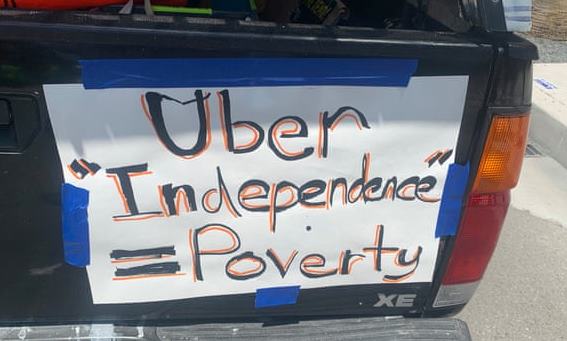
Capitalism in the US preaches individualism, which working people have been taught to equate with “freedom.” And of course there are a lot of choices you would prefer to make for yourself rather than having others do it for you—provided your economic and personal circumstances make it possible for you to have any choices. But if you can’t make the rent payment, choosing a steak dinner or to send out for pizza may not be an option. You’re probably stuck with a box of macaroni and cheese. People are told they can be whatever they want to be, they can make it on their own, and if they fail they have only themselves to blame. Given their situation and the cradle-to-the-grave propaganda they are constantly exposed to—subtle and not-so-subtle—is it any wonder their political consciousness is so low?
Under the conditions of class peace, labor unions have atrophied since the 1950s. With the membership disengaged, their leadership was no longer a leadership but little more than a lethargic dues-collecting bureaucracy. Its idea of struggle is limited to lobbying the Democratic Party. The percentage of workers with union representation fell from a high of 35 percent in the mid-1950s to 20.1 percent in 1983 to a mere 10.3 percent in 2019, with the figure for workers in private industry now standing at a mere 6.2 percent.[11] The labor movement today is a desiccated remnant of what it once was.
In general, the benefits of capitalist prosperity did not trickle down to African Americans. But legal reforms in the 1950s and ‘60s, largely the result of the struggles of the Civil Rights movement, eliminated legal segregation and other forms of legal discrimination. On the heels of those reforms, faces of darker shades began to appear in politics and the media. The leadership of the movements for racial equality was seduced into believing that if the Promised Land was not yet at hand it was at least visible on the horizon. But at the street level, conditions for African Americans and other people of color are no better now than they were in 1950, and in some respects they are even worse.[12]
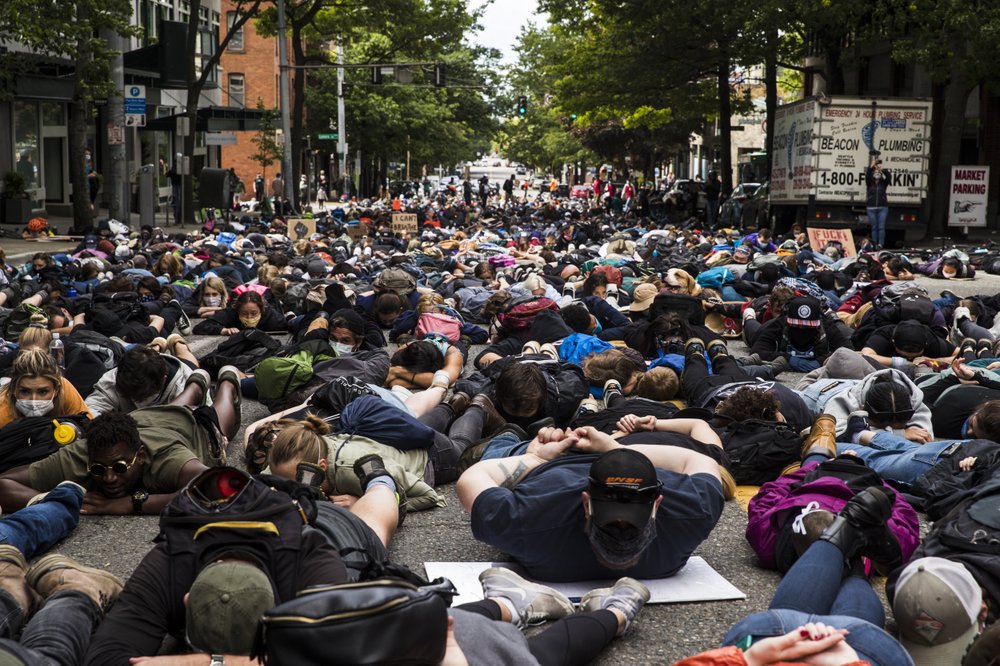
As to political consciousness, while today it is very low among the working class, history shows that it can develop rapidly—virtually overnight—when masses of people are in motion. Mass movements do not emerge because they are hatched by leaders in some office or basement or back room. They arise spontaneously, when conditions are ripe. Sometimes from incidents like that of Rosa Parks, an African-American seamstress in a Montgomery, Alabama, department store, who on December 1, 1955 refused to give up her bus seat to a Caucasian, thus sparking the Montgomery Bus Boycott and inspiring the Civil Rights movement as a whole. The time had come. African Americans were fed up. There was plenty of dry tinder. It was the same with the murder of George Floyd and the other police victims that sparked the Black Lives Matter movement. That movement has in a short time raised the consciousness of millions regarding the system of racism in this country.
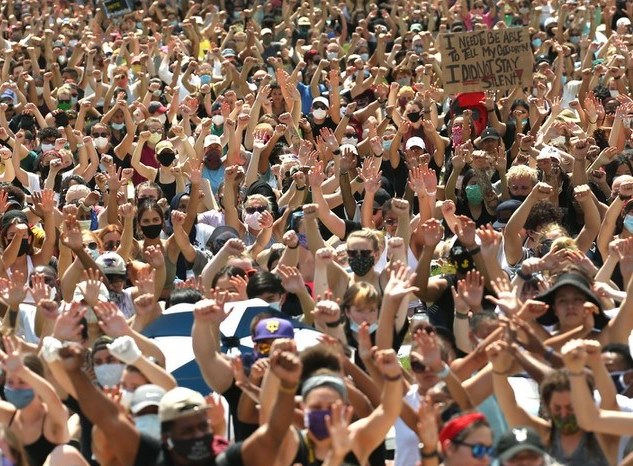
The times they are a-changing
There is plenty of dry tinder accumulating now. The COVID-19 pandemic has shaken the lives and livelihoods of countless millions around the globe. It has demonstrated the weakness of global capitalism. Capitalist governments proved unable, or at least late, in adopting consistent, coherent, and effective responses, unable to balance the needs and safety of their people with the economic demands of their ruling classes. That was spectacularly evident in the United States. But even before the pandemic, work in the US was undergoing radical transformations. The high-paying industrial jobs that brought many workers into the “middle class” in the second half of the 20th Century are largely gone. Many wage earners are now dependent upon working two or three jobs at once in order to support themselves and their families, even in single-parent families. Circumstances have forced many to become “gig” workers, with no security, no benefits, no protections. They have become the modern equivalent of casual or day laborers. Now some employers are saying that workers who continue to work from home after the pandemic should receive a pay cut! Many workers will work from home, if possible, simply because affordable child care is nonexistent.
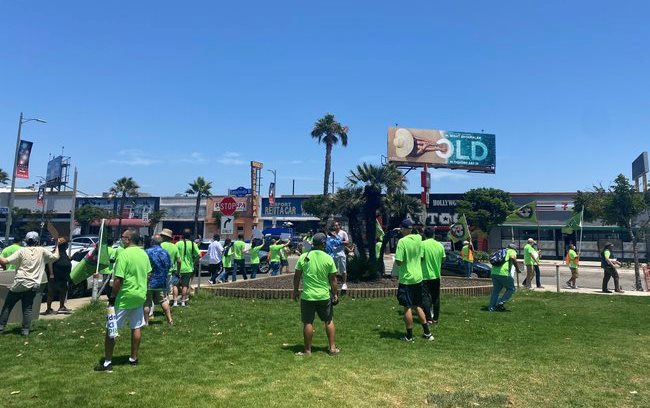
Decent housing has become unaffordable, in part a result of the capitalist craze for real estate flipping—buying up homes that come on the market, making a few cosmetic “improvements,” then within a few months re-selling the property at a fat profit. Single-family houses are now priced beyond the means of many would-be homeowners. Rents for apartments and houses are rising at unprecedented rates and many existing renters are facing eviction. Then there was the collapse of the Champlain Towers high-rise condo in Surfside, Florida, that killed 98 residents. Following the disaster investigators found that the 40-year-old building had structural issues from the very beginning that were never addressed. In 2018 a structural inspection warned of degradation to the building foundations, but plans for repairs were not acted upon. In large part that was because the residents balked at the price tag: they would have to pay $80,000 to $200,000 each for the repairs. The developer had long since taken his money and run. [13] [14] [15]

What is to be done?
If the US is not a democracy, is there no hope? True, there is no hope for real change through the electoral system as it now exists—a system designed and refined to maintain rule by supporters of the capitalist system and its world hegemonic compulsion. A vote for the Republican or Democratic parties is truly a vote wasted. Worse than a vote wasted, it is a vote against democracy, a vote for continued inequality, continued insecurity, continued racism, and continuing to put profits before people. But that doesn’t mean that change is impossible. Voting does not equal democracy and democracy does not equal voting! Meaningful change that has come in the past—worker rights, legal (if not real) equality for ethnic minorities and women—has come through democracy in the streets and the workplace, through the direct action of mass movements outside and independent of the electoral system. In the past such movements have tended not to be self-sustaining, however; up till now they have not been able to survive their own successes. Time and again their leaders have miss-led them into the Democratic Party where they are demobilized, de-clawed, rendered powerless.
Today there are signs of renewed life in the labor movement. Workers lost a round fighting the Amazon monster at its Alabama warehouse, but they haven’t lost hope. The horrific conditions of those low-wage, high-pressure, practically piecework jobs are the same all around the country. The fight goes on. And of course the Black Lives Matter movement and other movements are active. New mobilizations will arise, perhaps around housing, or jobs, or child care, or some new imperialist military adventure.
But what the labor movement and to one extent or another other movements lack is clear-sighted leadership that understands the need for mass mobilization independent of the capitalist parties and their politicians, however “progressive” those politicians may claim to be. That leadership must understand that no gains the mass movements make will be secure until there is a new political party, answerable to those movements and only to those movements. A party of the 94.4 percent that brings all the mass movements together and points the united finger squarely at capitalism and its two charlatan political parties.
Notes
- In the ancient world, so-called dynastic or palace economies, the gulf between the rulers and the ruled was so great that the former did not even consider the latter—those who would become the demos of ancient Athens–as related beings, considering (and often presenting) themselves as demigods if not descendants of the gods outright. Marc Van De Mieroop writes that in the wide arc of ancient city states that stretched from Egypt through Mesopotamia, Babylonia, Assyria, Persia, Anatolia, and on to the Grecian city states, “An international elite class emerged, whose participants had more in common with their colleagues in the other states than with the lower classes at home. The elites . . . [while] engaged in an unprecedented accumulation and display of wealth . . . simultaneously distanced themselves from the rest of the people by living in separate cities or city-quarters.” (Marc Van De Mieroop, A History of the Ancient Near East, c. 3000–323 BC, [Wiley & Sons, 2003] pp 153-154.) [Return to text]
- John Peterson, “Class Struggle and the American Revolution,” https://www.marxist.com/class-struggle-and-the-american-revolution.htm. [Return to text]
- Quoted in, Harry Frankel (pseudonym for Harry Braverman), “Sam Adams and the American Revolution,” serialized in The Militant, 11/12/1951 – 3/3/1952, republished on Marxists.org. [Return to text]
- Gouverneur Morris to Thomas Penn, May 10, 1774, text with commentary at: https://msuweb.montclair.edu/~furrg/spl/morristopenn.html [Return to text]
- Henry Alonzo Myers, from Are Men Equal? An Inquiry into the Meaning of American Democracy (1945), quoted in Herbert Aptheker, The American Revolution, 1763-1883 (New York: International Publishers, 1960, p. 46.) [Return to text]
- Albert Gallatin, a French speaking immigrant from Switzerland, was expelled from the US Senate in 1794, for that very reason. As a French speaker, he was suspected of being too sympathetic to the democratic ideas of the French Revolution. (Nancy Isenberg, Fallen Founder: The Life of Aaron Burr, New York: Penguin Books, 2007, pp. 132-134.) [Return to text]
- Zak Hudak, “Green Party candidates won’t be on ballot in Pennsylvania, state’s highest court rules,” CBS News Online Edition, September 17, 2020; Kevin Reed, “Democrats engineer removal of Green Party presidential candidates from Pennsylvania ballot,” September 18, 2020, https://www.wsws.org/en/articles/2020/09/18/penn-s18.html. [Return to text]
- Neil Sheehan, A Bright Shining Lie, Random House, 1988, p. 590. [Return to text]
- Paul Ryder, “The Pentagon Papers at 50: What’s Left Out is Crucial,” https://www.counterpunch.org/2021/05/25/the-pentagon-papers-at-50-whats-left-out-is-crucial/ [Return to text]
- Statistics are from the following sources: US Bureau of Labor Statistics; www.statista.com; “Missing Workers,” Economic Policy Institute, www.epi.org, 7/7/2017; US Small Business Administration; www.nass.usda.gov; www.ers.usda.gov. [Return to text]
- Steven Greenhouse, “Union Membership in U.S. Fell to a 70-Year Low Last Year,” New York Times, 1/22/2011 (https://www.nytimes.com/2011/01/22/business/22union.html); “Labor unions in the United States” (https://en.wikipedia.org/wiki/Labor_unions_in_the_United_States) [Return to text]
- Patrick Bayer and Kerwin Kofi Charles, “Divergent Paths: Structural Change, Economic Rank, and the Evolution of Black-White Earnings Differences, 1940- 2014” [Return to text]
- https://www.nytimes.com/2021/06/26/us/miami-building-collapse-investigation.html [Return to text]
- https://www.theatlantic.com/ideas/archive/2021/07/surfside-tower-was-just-another-condo-building/619348/ [Return to text]
- Washington Post, “Rent prices are soaring as Americans flock back to cities“; CBS News, “Rents are going through the roof across much of the U.S.” [Return to text]
